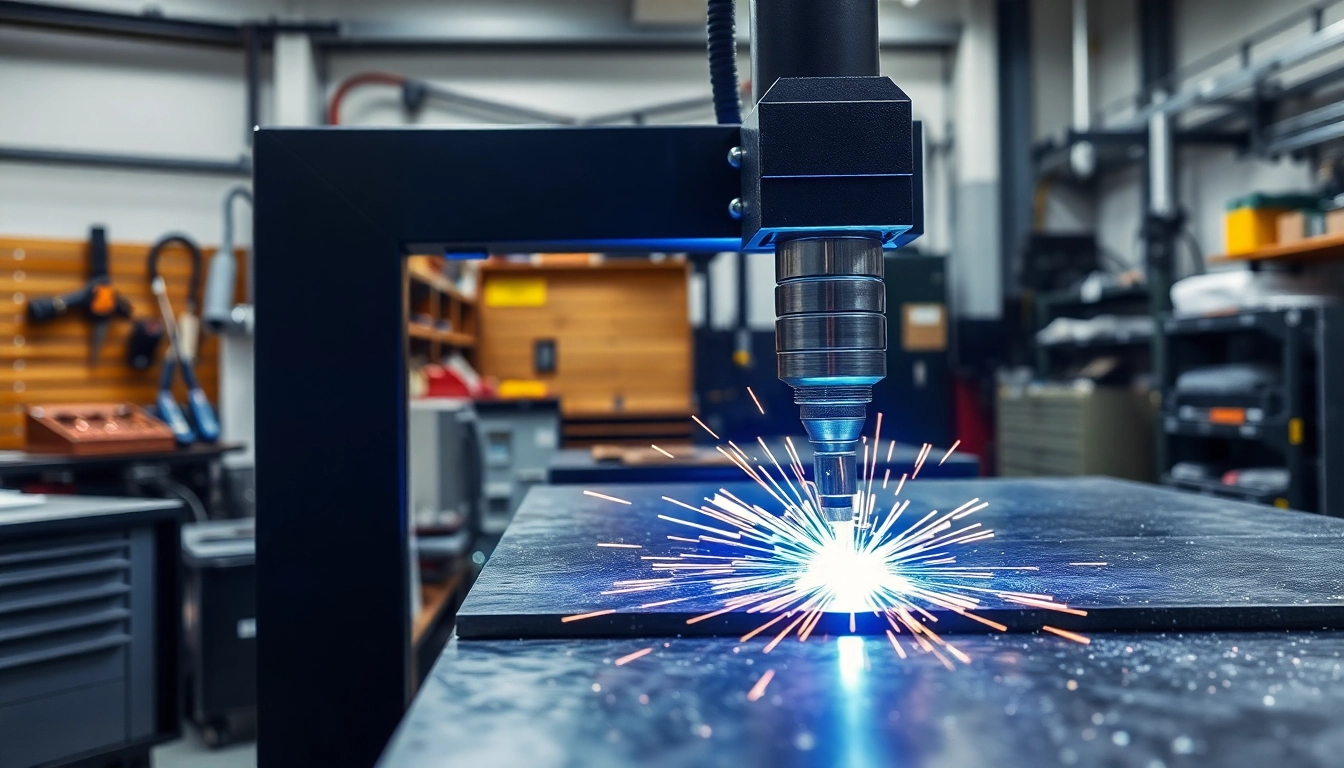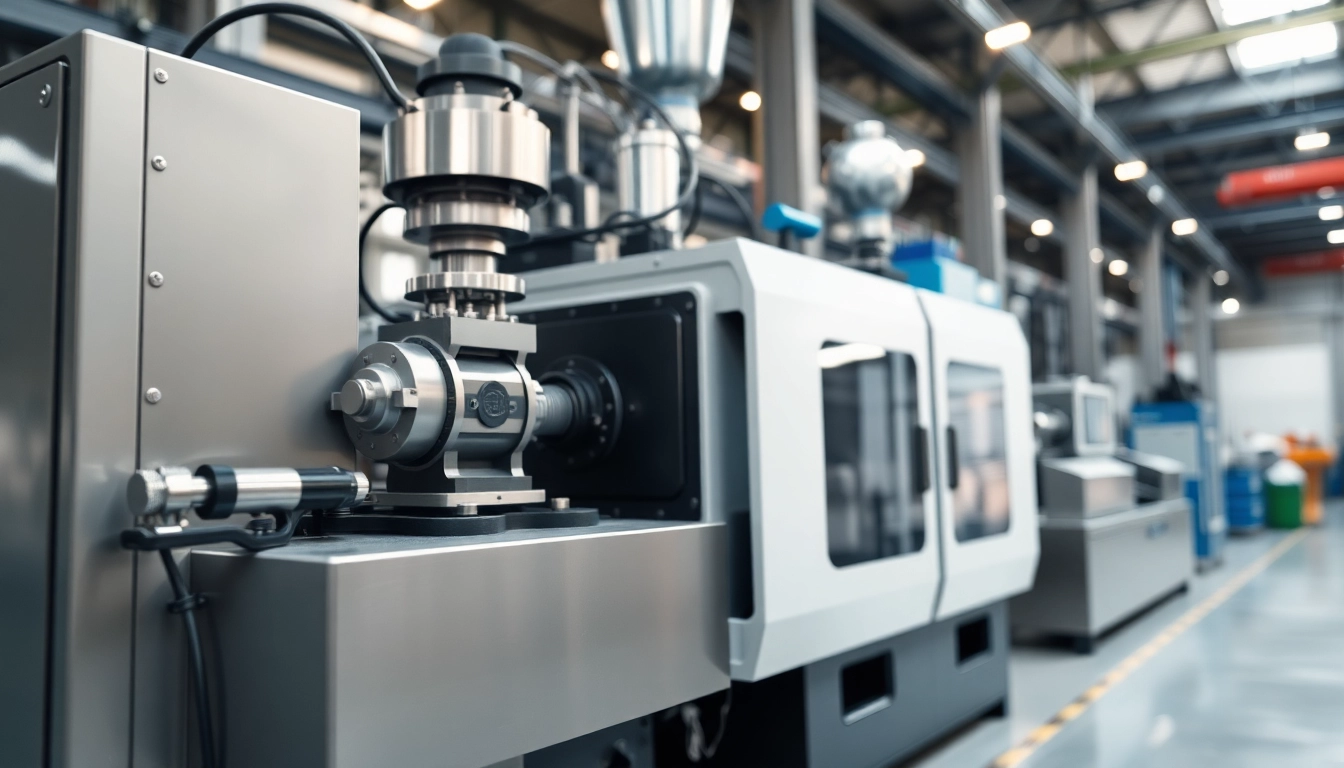Introduction to Laser welding machine
In the rapidly evolving landscape of manufacturing technology, the Laser welding machine has emerged as a cornerstone for precision and high-efficiency welding applications. This machine utilizes the concentrated energy of a laser to create deep, precise welds in various materials, redefining what is achievable in fabrication and assembly processes. In this article, we will explore what a Laser welding machine is, its key components and functionality, diverse applications across industries, and much more.
What is a Laser welding machine?
A Laser welding machine is a tool that employs a laser beam to melt and join materials. It operates by generating a focused beam of light that is directed to the part being welded. The energy from the laser beam is absorbed by the materials, which raises their temperature to the point of melting. As the melted areas cool, they fuse together, creating a strong bond. This method is known for its high precision and is particularly effective for applications requiring meticulous detail, such as in the aerospace and automotive sectors.
Key Components and Functionality
The functionality of a Laser welding machine hinges on several key components:
- Laser Source: This component generates the laser beam. Common types include solid-state lasers, fiber lasers, and CO2 lasers, each offering unique advantages depending on the materials being welded.
- Optical System: The optical system focuses the laser beam onto the workpiece. This focus is critical; the smaller the focus, the higher the energy density, which is necessary for effective welding.
- Control System: This component regulates the operation of the machine, including parameters like power output, speed, and timing.
- Cooling System: To prevent overheating, a cooling system may be integrated to maintain optimal operational temperatures for both the laser source and the machine components.
Each of these components works synergistically to produce precise and repeatable welding results that are indispensable in modern manufacturing practices.
Applications in Various Industries
Laser welding machines are versatile tools, finding applications in various sectors:
- Aerospace: In the aerospace industry, precision is non-negotiable. Laser welding machines are used to create lightweight, high-strength components that meet strict regulatory standards.
- Automotive: The automotive sector leverages these machines for advanced manufacturing techniques, including the welding of complex geometries and thin materials.
- Electronics: Laser welding is ideal for the assembly of electronic components, allowing for delicate connections without damaging sensitive parts.
- Medical Devices: In the medical arena, where hygiene and precision are paramount, laser welding machines are employed for manufacturing surgical instruments, implants, and diagnostic devices.
These applications not only illustrate the versatility of Laser welding machines but also demonstrate their essential role across different sectors in manufacturing high-quality products.
Advantages of Using a Laser welding machine
The adoption of Laser welding machines in manufacturing is attributed to various significant advantages that enhance operational efficiency, cost-effectiveness, and product quality.
Precision and Accuracy in Welding
One of the most critical benefits of using a Laser welding machine is its ability to provide unparalleled precision and accuracy. The focused laser beam allows for extremely fine control over the welding process, resulting in less distortion and a strong bond even in delicate materials. This precision is particularly important in industries like aerospace and medical devices, where even minute deviations can lead to significant consequences.
Speed and Efficiency Benefits
Laser welding machines operate at high speeds, resulting in faster manufacturing processes. The ability to weld quickly without additional material or significant post-processing contributes to increased overall efficiency. When compared to traditional welding methods, Laser welding often reduces cycle times, enabling manufacturers to produce products more rapidly without sacrificing quality, thereby enhancing their competitive edge.
Cost-Effectiveness in Manufacturing
Although the initial investment in a Laser welding machine might be higher than that for conventional equipment, the long-term savings are considerable. The precision and efficiency of laser welding lead to reduced waste, less material give-away, and lower energy consumption. Moreover, the reduction in labor costs—due to the automation capabilities of Laser welding machines—can further enhance the return on investment, making the technology a financially viable option for modern manufacturing.
Choosing the Right Laser welding machine
With various models and features available, selecting the appropriate Laser welding machine can be a daunting process. Here are several factors to consider to ensure you make an informed decision.
Factors to Consider
When selecting a Laser welding machine, consider the following:
- Material Compatibility: Ensure that the machine can handle the specific materials you will be working with, such as steel, aluminum, or plastics.
- Power and Performance: The power of the laser affects the types of materials that can be welded and the thicknesses achievable. Higher power typically translates to greater versatility.
- Cooling Requirements: Assess whether the machine’s cooling system is suitable for your operational environment and whether it meets your production demands.
- Automation Features: Consider the level of automation offered, including programmable settings, which can enhance the efficiency and consistency of the welding process.
Comparing Different Models
To find the right Laser welding machine, it’s advisable to compare various models and their features. Examine technical specifications, user reviews, and case studies to understand real-world applications and performance metrics. Additionally, consider seeking demonstrations from manufacturers to assess how each model performs in practice.
Budget and Investment Analysis
Establishing a budget is crucial when investing in a Laser welding machine. Analyze not only the initial purchase cost but also consider ongoing operational expenses, such as maintenance, material costs, and energy consumption. Calculate the total cost of ownership over the expected lifespan of the machine, as this offers a more comprehensive understanding of the investment’s return.
Best Practices for Operating a Laser welding machine
To maximize the effectiveness of a Laser welding machine, operators must adhere to certain best practices that promote safety, efficiency, and machine longevity.
Safety Protocols and Guidelines
Safety should always be a top priority when operating Laser welding machines. Operators must wear appropriate personal protective equipment (PPE), including eyewear specifically designed for laser protection. Furthermore, a safety protocol should be established that covers machine operation, emergency shutoff procedures, and environmental considerations, such as ensuring proper ventilation to manage fumes generated during welding.
Maintenance Tips for Longevity
Regular maintenance is vital for keeping your Laser welding machine running smoothly and prolonging its life. This includes routine checks on essential components such as the laser source and optical system, ensuring that cooling systems are functioning correctly, and cleaning optics to prevent contamination that could impair performance. Documenting maintenance activities can also help identify patterns that indicate when more significant servicing may be needed.
Training and Skill Development
To fully leverage the capabilities of a Laser welding machine, proper training for operators is essential. Comprehensive training programs should cover not only the technical operation of the machine but also troubleshooting techniques, quality control measures, and the specifics of the materials being processed. Ongoing skill development can ensure that team members stay updated on advancements in laser technology and best practices.
Future Trends in Laser Welding Technology
As technology continues to evolve, so does the landscape of Laser welding. Understanding emerging trends can help businesses stay ahead in this competitive field.
Innovations on the Horizon
Future innovations in Laser welding technology are expected to enhance versatility, increase efficiency, and reduce operational costs. Developments in laser sources, such as the emerging trend in ultra-fast lasers, could enable new welding techniques that minimize thermal effects, enhancing the integrity of welds even in sensitive materials.
Impact of Automation
Automation is becoming increasingly integral to manufacturing processes, including Laser welding. Automated Laser welding systems can operate with minimal human intervention, providing consistency and quality assurance while reducing labor costs. As robotics and artificial intelligence continue to advance, we can expect to see more sophisticated systems that improve workflow and productivity.
Emerging Applications in New Markets
As industries evolve, new applications for Laser welding technology are emerging. For instance, the combination of 3D printing and Laser welding is gaining traction, allowing manufacturers to create complex geometries. Additionally, new markets such as renewable energy, specifically solar and wind power, are beginning to utilize Laser welding techniques for constructing advanced components.



